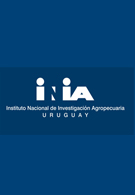ABSTRACT.- The development of metrics to assess the sustainability of food production systems is vital for achieving sustainable global agri-food systems. Nitrogen use efficiency (NUE), defined as the ratio of nitrogen (N) in food outputs to total N inputs, is a key indicator of resource efficiency in crop and livestock systems. This study quantified and compared NUE, N surplus (NSURP, total N inputs minus N in food products), and N balance (N retained, calculated as inputs minus food outputs and losses) across four pasture-crop rotation systems with varying land-use intensity, evaluated at both component (crop and livestock) and system levels from 2019 to 2022. The systems included continuous cropping (CC), short rotation (SR; 2-year crops + 2-year pasture), long rotation (LR; 2-year crops + 4-year pasture), and forage rotation (FR; continuous pasture with tall fescue). Data were primarily collected at the field level. Major findings showed crop NUE ranging from 62.5% (CC) to 83.8% (SR), livestock NUE from 5.5% (FR) to 24.4% (CC), and system NUE from 5.5% (FR) to 43.4% (CC). Systems with pastures (SR, LR, FR) retained more soil N (up to 64?kg?N?ha-1 in FR) compared to CC (4.9?kg?N?ha-1), highlighting the role of pastures in nutrient retention. These component-specific differences underscore the need for tailored management strategies, such as optimizing organic N inputs from livestock and improving grazing practices, to enhance NUE and guide systems toward a sustainable "safe operating space." © 2025 Pereyra-Goday, Castillo, Rovira, Ayala, Lee and Rivero.

